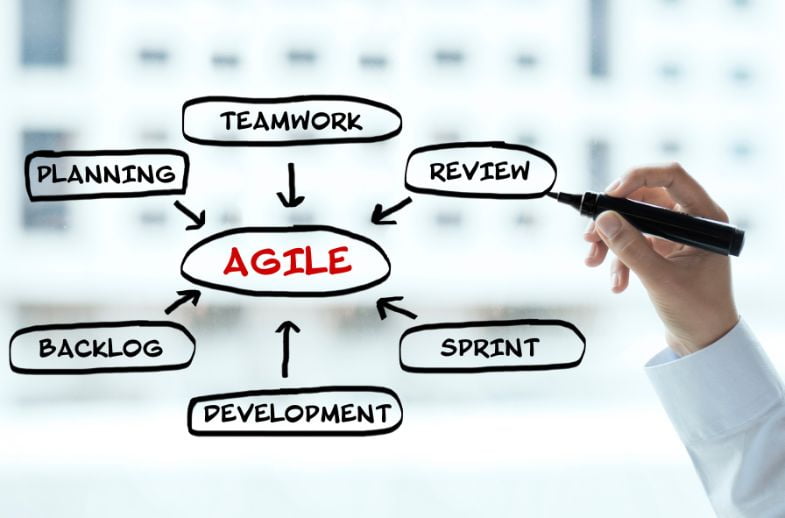Techniques for Prioritizing Data Requirements in Agile Development

Creating features in software that value the customers is the ultimate goal of any project development lifecycle. The agile development process is one of the types of software development lifecycle where flexibility and efficiency are the top priority. Both of these factors can only be achieved by prioritizing data requirements which helps to deliver quality products.
To prioritize data requirements in the agile development process, there are certain regulations that you have to follow. Data requirements prioritization is an essential part of agile software development since it increases the value of requirements stated by the client and adjusts the accommodation or need for the changing requirements.
In a nutshell, it’s essential to prioritize data so that the developers don’t have to go through the updating and changing process based on requirements. To tackle this issue, we have brought several techniques for prioritizing data requirements in Agile development that will make your software development lifecycle more seamless.
Strategies for Prioritizing Data Requirement in Agile Development
Agile product development significantly introduces greater complexity than traditional software development processes since it comprises some self-organizing teams. This complexity brings forth unique challenges that need to be addressed. Effectively managing the product team while striving to deliver the final product can prove to be quite demanding. Therefore, agile product managers and teams find it beneficial to utilize initial prioritization techniques, like the Value vs. Effort or RICE prioritization models integrated into StoriesOnBoard, which you can freely explore. Below are some best strategies that will help to prioritize data requirements in agile development:
Cost of Delay (CoD)
The Cost of Delay is a powerful metric that will be used to prioritize data requirements based on their time value. The longer a requirement takes to implement, the more it costs in terms of lost opportunities or potential revenue. Agile teams can calculate the Cost of Delay for each data requirement and focus on those with the highest value or impact. As an outcome, you will have a carefully planned schedule contributing to budget savings.
Hence, this prioritization model primarily focuses on the financial domain and does not directly concern itself with user experience or customer satisfaction. Although you may consider these factors when calculating the Cost of Delay, they are not the primary objectives of this particular prioritization model. Utilizing this technique in conjunction with others would result in financially sound and emotionally justifiable decisions.
Read Also: Software Testing Trends That Are Here to Rule 2023
Stakeholder Collaboration
One of the fundamental principles of Agile is close collaboration with stakeholders. For data-driven projects, involving stakeholders from different business units, data analysts, and data scientists is crucial. Conducting workshops, interviews, or surveys can help gather their perspectives, insights, and data requirements. These sessions should focus on understanding the business value of each requirement, the potential impact on decision-making, and the urgency of implementation. By involving stakeholders early and continuously, the team can refine the backlog and prioritize data requirements based on real business needs.
MoSCoW Method
The MoSCoW method is a popular technique for prioritizing requirements in Agile development. The acronym stands for “Must have,” “Should have,” “Could have,” and “Won’t have.” Applying this method to data requirements enables the team to categorize them based on their criticality. “Must-have” requirements are essential for the system’s core functionality and must be addressed in the earliest iterations. “Should-have” requirements are important but not critical, and “Could-have” requirements are desirable but not vital. “Won’t have” requirements are deliberately excluded, at least for the project’s current scope. The MoSCoW method ensures that the team focuses on delivering the most valuable data requirements first, promoting the efficient use of resources.
Kano Model
The Kano Model categorizes requirements based on customer satisfaction levels. It classifies data requirements into three types: “Basic Needs,” “Performance Needs,” and “Excitement Needs.” Basic Needs represent must-have features that customers expect as a minimum. Performance Needs are features that directly correlate with customer satisfaction and are typically prioritized next. Excitement Needs, though not essential, can surprise and delight customers, contributing to long-term loyalty. Prioritizing data requirements using the Kano Model helps deliver a well-balanced product that meets fundamental and customer satisfaction requirements.

Value vs. Effort Matrix
The Value vs. Effort Matrix is a visual tool used to assess the value of each data requirement against the effort required for its implementation. The team evaluates each requirement and assigns a value score based on its potential impact on business outcomes. Simultaneously, they assess the estimated effort or complexity involved in delivering each requirement. Plotting these scores on a two-dimensional matrix helps identify high-value, low-effort requirements that can be prioritized for immediate implementation. Furthermore, it helps identify quick wins that can boost stakeholder satisfaction and project momentum.
Weighted Shortest Job First (WSJF)
WSJF is a prioritization technique commonly used in Agile frameworks like SAFe (Scaled Agile Framework). It considers the value of a data requirement and its relative size and complexity. To calculate WSJF, the team assigns a Business Value (BV) score to each requirement and a relative Size (S) score based on its complexity or effort. The formula for WSJF is BV divided by S, resulting in a numerical score that ranks the data requirements based on their value-to-effort ratio. Prioritizing data requirements using WSJF ensures that the team focuses on delivering the most valuable features that require the least effort, maximizing return on investment.
Read Also: The Impact of IT Services on Your Business
Relative Weighting
Relative Weighting is a collaborative approach where stakeholders collectively assign priority scores to data requirements. Each requirement is compared against others, and a relative priority score is assigned, typically using a scale of 1 to 10. The most critical data requirements emerge by averaging the scores, enabling Agile teams to focus on high-priority items with a shared understanding of their importance. The relative weighting prioritization technique considers two main factors. First, a feature’s value and second, its absence’s negative impact. The final priority and rank are determined by dividing the combined benefit and penalty scores by the sum of the cost and risk scores. This numerical output facilitates quicker decision-making for the product owner.
Impact Mapping
Impact Mapping is a visual technique that helps to align data requirements with the desired business outcomes. It starts with defining high-level business objectives of the project and then identifying the user behaviors necessary data requirements to achieve those goals. This technique helps Agile teams understand the significance of each requirement and prioritize those directly linked to achieving the project’s objectives. Furthermore Impact mapping facilitates focused decision-making and fosters a shared understanding among team members and stakeholders.
Conclusion
Prioritizing data requirements in Agile development is essential for creating successful and customer-centric products. The techniques mentioned in this article, such as User Story Mapping, MoSCoW Method, Kano Model, Cost of Delay, Weighted Shortest Job First, Relative Weighting, and Impact Mapping, provide valuable tools to Agile teams for making informed decisions about which data requirements to address first. By focusing on the most critical and valuable requirements, Agile development teams can deliver high-quality products that effectively meet customer needs and expectations. Adaptability and continuous refinement of priorities throughout the development process are fundamental to ensuring a successful Agile approach.






